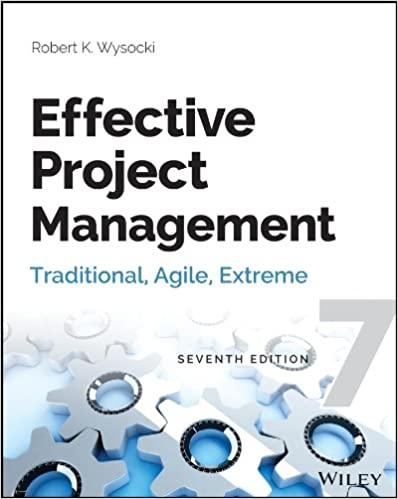Answered step by step
Verified Expert Solution
Question
1 Approved Answer
In the context of the size of a firm, the concepts of risk in the Principles of Real Estate course can be applied to understand
In the context of the size of a firm, the concepts of risk in the Principles of Real Estate course can be applied to understand the potential challenges and considerations faced by firms of different sizes. The concepts of risk, such as market, financial, operational, and legal risks, apply to firms of all sizes. However, these risks' specific nature and magnitude may vary depending on the firm's size. Let's explore how these concepts may change for small, medium-sized, and large firms: Small Firm: In a small firm, the scale of operations and resources may be limited. The main focus might be on survival and growth. The key risks for a small firm could include market volatility, cash flow challenges, operational inefficiencies, and regulatory compliance. Risk management in a small firm may involve implementing cost-effective strategies, diversifying revenue streams, optimizing operational processes, and ensuring compliance with applicable laws and regulations. Medium-sized Firm: As a firm grows to a medium-sized entity, it typically faces additional risks associated with scaling operations. These may include managing increased financial obligations, expanding market reach, and maintaining operational effectiveness. Risk management for a medium-sized firm could involve strengthening financial controls, enhancing marketing and sales strategies, implementing more robust operational systems, and developing talent management practices. Large Firm: Large firms often encounter complex risks due to their size, organizational structure, and extensive operations. These risks may include macroeconomic factors, global market dynamics, regulatory changes, brand reputation, and strategic decision-making. Risk management for a large firm may involve establishing dedicated risk management departments, implementing enterprise risk management frameworks, conducting comprehensive risk assessments, and ensuring strong governance and compliance protocols. As a small firm increases in size, its approach to risk management may change. Initially, the firm's risk management may be more informal and reactive. However, as the firm grows, it may adopt a more proactive and structured approach to risk management. This could involve implementing risk management frameworks, conducting regular risk assessments, establishing risk mitigation strategies, and assigning dedicated resources to manage risks. The owners of a growing firm may respond to changes in risk by reassessing their risk appetite and tolerance. They may seek professional advice, develop risk management policies and procedures, invest in risk mitigation measures, and consider diversification strategies. The owners' response to changes in risk will depend on their objectives, industry dynamics, and the specific circumstances of the firm's growth. The changes related to risk management may differ if a different industry is involved. Each industry has its own unique risks and regulatory requirements. For example, a real estate firm may face risks related to property market fluctuations, zoning regulations, and legal liabilities, while a technology firm may face risks associated with intellectual property, cybersecurity, and market disruptors. The specific industry dynamics will influence the nature and priority of risk management strategies and initiatives. Overall, the concepts of risk remain relevant across firms of different sizes. However, the specific risks, approaches to risk management, and responses to changes in risk will vary based on the size of the firm, its industry, and the evolving business environment. OECD (2014), Risk Management and Corporate Governance, Corporate Governance, OECD Publishing. http://dx.doi.org/10.1787/9789264208636-en https://hbr.org/1980/07/strategic-management-for-competitive-advantage
Step by Step Solution
There are 3 Steps involved in it
Step: 1

Get Instant Access to Expert-Tailored Solutions
See step-by-step solutions with expert insights and AI powered tools for academic success
Step: 2

Step: 3

Ace Your Homework with AI
Get the answers you need in no time with our AI-driven, step-by-step assistance
Get Started


